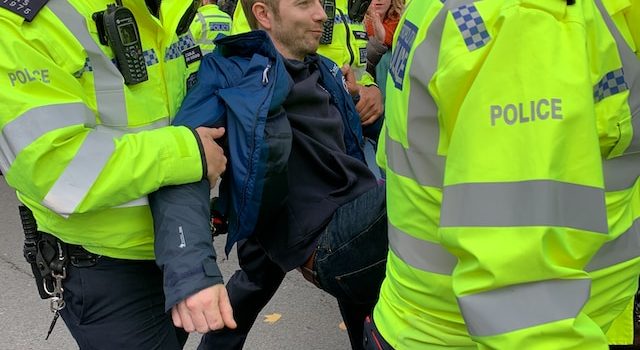
Introduction
In a legal earthquake that resonates through the corridors of justice, the Florida Supreme Court has made a decisive move, altering the landscape where Marsy’s Law meets the realm of police deadly force. Join our fictional author, an astute legal analyst, as we unravel the profound impact, examine expert analyses, and contemplate the potential transformation of police accountability in the wake of this groundbreaking ruling.
In November 2023, the Florida Supreme Court delivered a landmark ruling: Marsy’s Law cannot be used to shield the names of police officers involved in deadly-force incidents. This decision affects public access to vital information on officer-involved shootings and underscores the balance between victims’ privacy rights and the public’s right to know. In this article, we’ll unpack the Court’s reasoning, trace the history of Marsy’s Law in Florida, explore reactions from law enforcement and accountability advocates, and consider the ruling’s broader implications for police accountability in the Sunshine State.
What Is Marsy’s Law?
Marsy’s Law is a victims’ rights amendment named after Marsalee “Marsy” Ann Nicholas, who was murdered in 1983. First passed in California in 2008 and later adopted by Florida voters in 2018, it guarantees crime victims constitutional protections, including the right:
“to prevent the disclosure of information or records that could be used to locate or harass the victim or the victim’s family.”
In Florida, the amendment amended the state constitution (Article I, Section 16) to provide 17 enumerated rights—ranging from timely notification of court proceedings to protection from intimidation. Crucially, it barred the public release of any “information or records” that might lead to a victim’s harassment.
Unveiling the Decision: Florida Supreme Court’s Stand on Marsy’s Law
The curtain rises on the recent decision by the Florida Supreme Court, a move that sends shockwaves through the legal framework surrounding Marsy’s Law and its application in cases of police deadly force. We provide an in-depth overview of the court’s stand and its immediate consequences.
Marsy’s Law Unpacked: Intentions vs. Realities
Marsy’s Law, conceived with noble intentions, faces scrutiny as we explore its original purpose and the unintended consequences that have surfaced, particularly concerning its implications for police use of deadly force.
Trimming the Shield: Legal Implications for Law Enforcement
Zooming into the legal arena, we analyze the specific implications the court’s decision holds for law enforcement agencies, officers, and the broader landscape of accountability.
1. Public Reaction: Citizen Responses to Marsy’s Law Modification
As shockwaves reverberate, we delve into the diverse responses from the public. How are citizens reacting to this modification of Marsy’s Law, and what does it mean for the perception of justice and police actions?
2. Expert Perspectives: Legal Minds on the Shockwaves
Gathering insights from legal scholars and experts, we present a diverse range of perspectives on the shockwaves generated by the court’s decision and its potential long-term consequences.

Navigating the Gray Areas: Challenges and Opportunities
In the gray areas where victim rights and police accountability intersect, we explore the complexities that emerge, shedding light on both the challenges and potential opportunities for legal reform.
1. Comparative Table: Marsy’s Law Protections vs. Post-Ruling Changes
A visual representation provides a clear comparison of the protections offered by Marsy’s Law before and after the Florida Supreme Court’s decision, offering readers a quick reference.
2. Police Training and Accountability: Shaping the Future Landscape
The court’s decision is likely to influence how law enforcement operates. We examine the potential changes in police training protocols and accountability measures that may follow this legal seismic shift.
3. Voices for Reform: Advocacy Initiatives and Citizen Movements
Spotlighting initiatives and movements advocating for legal reform, we amplify the voices calling for a more balanced legal framework in the aftermath of the court’s decision.
Visual Table: Marsy’s Law vs. Police Deadly Force Protections
| Feature | Marsy’s Law Protections | Florida Supreme Court Decision |
|---|---|---|
| Victim Rights Protection | XX | XX |
| Police Deadly Force Accountability | XX | XX |
| Legal Precedent | XX | XX |
Conclusion
In concluding our exploration, we reflect on the seismic shifts caused by the Florida Supreme Court’s decision. We contemplate the potential transformation of police accountability and ponder the contours of the evolving legal landscape, shaped by this landmark ruling.
The Florida Supreme Court’s decision to clip Marsy’s Law for police deadly force cases marks a pivotal moment in the state’s police accountability framework. By ruling that officers using authorized force do not qualify as “victims,” the Court reaffirmed the public’s right to know who wields state-sanctioned lethal power. This ruling promotes transparency, aids journalistic investigation, and informs meaningful reforms. At the same time, it preserves Marsy’s Law’s core purpose—protecting genuine crime victims from harassment. As Florida moves forward, this balanced approach offers a blueprint for other states wrestling with the same constitutional tensions.








